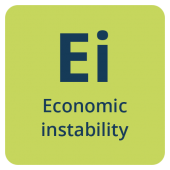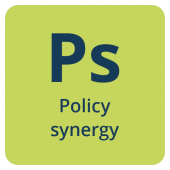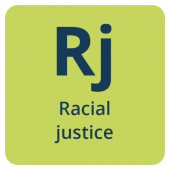The broader external context, including the characteristics of a local community (e.g., capacity, values, and resources); organizational features of partners; and the macro environment, including policies, economics, and crises, can all impact the success of a local wellness fund.
Context matters, yet context is complex and multilayered. Context can include not just the characteristics of a local community (e.g., capacity, values, and resources), but also the organizational features of partners, and the broader external environment, including policies, economics, and crises. For an intervention to be successful, it must contextually fit at all of these levels for those implementing, receiving, and supporting an intervention.
Contextual factors at the individual, organizational, and systems levels will affect the ability of a local wellness fund to succeed. The context may accelerate success or the context can create headwinds. For instance, external pressures can spur a sense of urgency for sectors to align (e.g., state or federal pilot initiatives or policies, newly available resources, or public health crises) to address health inequities. But, internal factors within organizations (e.g., capacity, leadership, workforce, information infrastructure, incentives, financial management, and accountability) and elements will impact the ability of collaboratives to work together (e.g., interpersonal dynamics, past collaborative history or relationships, stakeholders’ mindset, and backbone support) to create meaningful change.
The unprecedented events of the past two years have rapidly changed the external environment. The COVID-19 pandemic unleashed economic struggles and increased awareness of health and social disparities and the long-standing systemic conditions that drive these inequities. The policies in response to the pandemic gave rise to billions in federal relief and recovery funds that present unprecedented opportunities for cities, counties, and states to transform the way they address the goals and needs of the people they serve. With a strategic mindset, communities can ensure these investments both meet urgent needs from ongoing crises, while also laying the foundation for an equitable and resilient response.
This domain will examine the potential impact four elements — COVID-19 funding, economic instability, policy synergy, and racial justice — have on the development and sustainability of local wellness funds.
To learn more about each element, select the name of the element.

COVID-19 Funding
Billions of dollars in federal recovery funds are flowing into states and cities, and present unprecedented opportunities to recover from the impacts of the COVID-19 pandemic, to rebuild the economy, and to purposefully address systemic inequities. Aside from the historic scale of funding, one other advantage of the COVID-19 relief funds is that states and localities are given significant flexibility in how they spend their money. As a potential local fiscal intermediary, local wellness funds can play a key role in local recovery planning and implementation efforts. With established cross-sector partnerships, existing governance and accountability structure, and capital absorption capacity, local wellness funds bring important functions to COVID-19 recovery discussions. It is incumbent upon local wellness fund leaders to understand the local allotment of recovery funds, examine this historic opportunity through an adaptive leadership lens, and center discussions around local priorities with an equity framing, while ensuring community engagement and accountability.
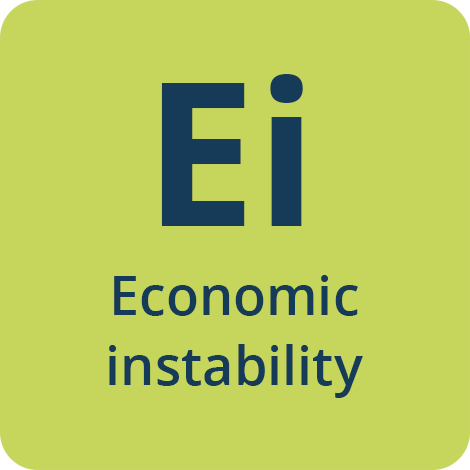
Economic Instability
There is strong evidence showing a relationship between income, socioeconomic status, and health outcomes, including increased risk for chronic disease, adverse behavioral effects, and shorter life expectancy. Given this direct link between income and health, policies and programs addressing financial instability in the short-term and the root causes of poverty over the long-term will yield individual and population-level improvements in health and well-being. By understanding the local economic outlook and identifying populations facing the greatest economic instability, local wellness funds will have the data to make the case to the community, funders, and partners; to drive decision-making around uses and strategy; and to develop a plan or make necessary adaptations. The table below includes some measures and indicators that local wellness funds might find useful.

Policy Synergy
Political scientist John Kingdon recognizes open policy windows are those opportune times when three key things align to enable change: a recognized problem, a viable solution, and the political will. In order to foster an environment that may build the political will around a policy, the Georgia Health Policy Center thinks of policy metaphorically as a game of triple layer chess, in which policy simultaneously occurs at the local, state, and national levels. When there is alignment among parties both within and across the three levels, policy is most viable. Awareness of policies at the local, state, and national levels can facilitate the creation of local wellness funds.
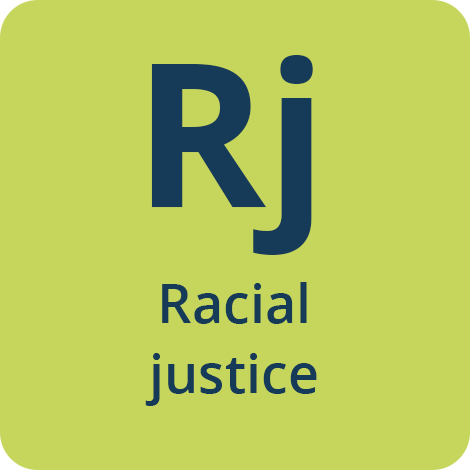
Racial Justice
Racial justice extends beyond the absence of disparities, discrimination, or inequity. It includes both equitable opportunities and outcomes, and relies on deliberate systems and supports to achieve and sustain racial equity through proactive and preventative measures. Health equity is inextricably linked to racial justice. Given the role of social determinants like housing, income, and education have in determining health outcomes, and that there are long-standing structural barriers to equity in these areas, changes in health equity necessitates changes in racial equity. So, what can a local wellness fund do in their community to work toward racial justice? First, achieving racial equity requires understanding the differential treatment groups receive based on ascribed race and ethnicity. Secondly, local wellness funds can embed the four pillars of procedural justice into their work.
To learn more about each topic, select the element box.
COVID-19 Funding
Billions of dollars in federal recovery funds are flowing into states and cities, and present unprecedented opportunities to recover from the impacts of the COVID-19 pandemic, to rebuild the economy, and to purposefully address systemic inequities. Aside from the historic scale of funding, one other advantage of the COVID-19 relief funds is that states and localities are given significant flexibility in how they spend their money. As a potential local fiscal intermediary, local wellness funds can play a key role in local recovery planning and implementation efforts. With established cross-sector partnerships, existing governance and accountability structure, and capital absorption capacity, local wellness funds bring important functions to COVID-19 recovery discussions. It is incumbent upon local wellness fund leaders to understand the local allotment of recovery funds, examine this historic opportunity through an adaptive leadership lens, and center discussions around local priorities with an equity framing, while ensuring community engagement and accountability.
Economic Instability
There is strong evidence showing a relationship between income, socioeconomic status, and health outcomes, including increased risk for chronic disease, adverse behavioral effects, and shorter life expectancy. Given this direct link between income and health, policies and programs addressing financial instability in the short-term and the root causes of poverty over the long-term will yield individual and population-level improvements in health and well-being. By understanding the local economic outlook and identifying populations facing the greatest economic instability, local wellness funds will have the data to make the case to the community, funders, and partners; to drive decision-making around uses and strategy; and to develop a plan or make necessary adaptations. The table below includes some measures and indicators that local wellness funds might find useful.
Policy Synergy
Political scientist John Kingdon recognizes open policy windows are those opportune times when three key things align to enable change: a recognized problem, a viable solution, and the political will. In order to foster an environment that may build the political will around a policy, the Georgia Health Policy Center thinks of policy metaphorically as a game of triple layer chess, in which policy simultaneously occurs at the local, state, and national levels. When there is alignment among parties both within and across the three levels, policy is most viable. Awareness of policies at the local, state, and national levels can facilitate the creation of local wellness funds.
Racial Justice
Racial justice extends beyond the absence of disparities, discrimination, or inequity. It includes both equitable opportunities and outcomes, and relies on deliberate systems and supports to achieve and sustain racial equity through proactive and preventative measures. Health equity is inextricably linked to racial justice. Given the role of social determinants like housing, income, and education have in determining health outcomes, and that there are long-standing structural barriers to equity in these areas, changes in health equity necessitates changes in racial equity. So, what can a local wellness fund do in their community to work toward racial justice? First, achieving racial equity requires understanding the differential treatment groups receive based on ascribed race and ethnicity. Secondly, local wellness funds can embed the four pillars of procedural justice into their work.
American Rescue Plan Act of 2021 Summary
The National Association of County & City Health Officials provided this overview of the $1.9 trillion of relief spending in the American Rescue Plan Act of 2021. This summary provides local wellness funds with a high-level outline of the breakdown of funds for public health, state and local government, and individual economic relief.
U.S. Treasury’s Fact Sheet State and Local Recovery Funds
With the launch of the Coronavirus State and Local Fiscal Recovery Fund, the U.S. Department of the Treasury released details on how funds can be used to respond to acute pandemic response needs, to fill revenue shortfalls among state and local governments, and to support the communities and populations hardest-hit by the COVID-19 crisis. This overview aids local wellness funds in understanding allowable uses and ineligible uses.
Vital Conditions for Community Health and Well-Being Framework
The Seven Vital Conditions for Well-Being, conceptualized by ReThink Health and the Well-Being in the Nation Network, is a framework for conceptualizing holistic well-being. It brings together 75 indicators in seven domains representing major determinants of health. Local wellness funds can use this framework to organize priorities and identify areas where cross-sector coordination can leverage greater resources and impact. On the Community Commons site, each vital condition is accompanied by stories of inspiration about local, state, and national efforts underway to address the condition, data tools and resources to assess the condition locally, and policy resources that outline how to impact this condition.
Agendas, Alternatives and Public Policies
This book by John Kingdon outlines his Multiple Streams Framework as a tool to understand policy making and agenda setting. The book can help local wellness funds learn how they can influence policy outcomes by recognizing when an open policy window exists with alignment of a recognized problem, a viable solution, and the political will.
Equity Footprint Framework
This framework, developed by Frontline Solutions, is intended to help foundations in their implementation of an equity strategy. Resources, tools, and guiding questions are available for seven domains, including organizational culture, grantmaking, investments, leadership and governance, operations, communications, and evaluation and learning. Given that local wellness funds conduct grantmaking in a manner similar to foundations, these resources can provide valuable guidance.


